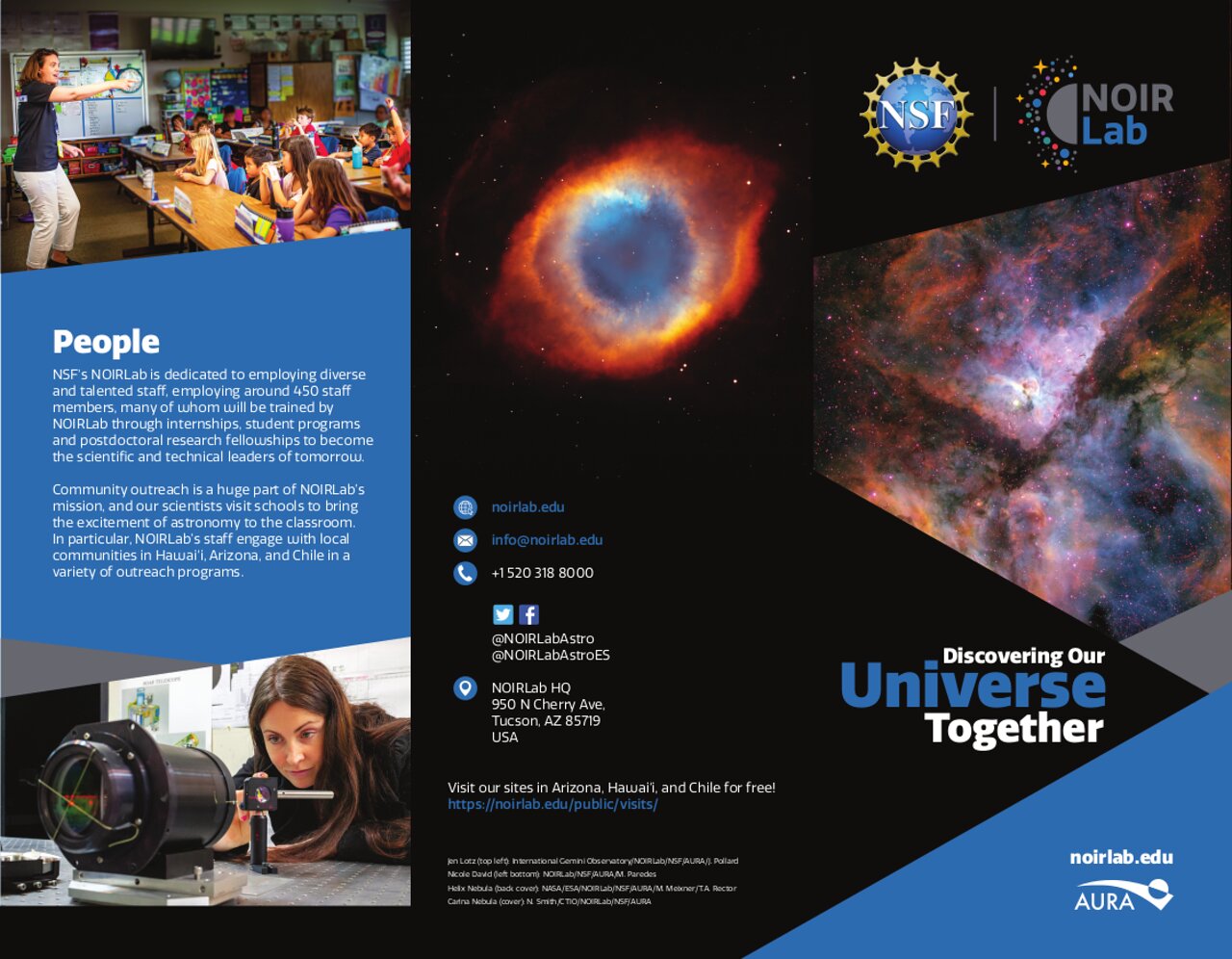FAQs
What is NSF’s NOIRLab?
As of 1 October 2019, all National Science Foundation-funded ground-based nighttime optical and infrared astronomical research facilities operate together in one organization called NSF’s NOIRLab (National Optical-Infrared Astronomy Research Laboratory). The new organization operates five scientific Programs: Cerro Tololo Inter-American Observatory (CTIO); the Community Science and Data Center (CSDC); Gemini Observatory; Kitt Peak National Observatory (KPNO); and the Vera C. Rubin Observatory. It is managed by the Association of Universities for Research in Astronomy (AURA) under a cooperative agreement with NSF.
NOIRLab is the preeminent US center for ground-based optical-infrared astronomy, enabling breakthrough discoveries in astrophysics by developing and operating state-of-the-art ground-based observatories and providing data products and services for a diverse and inclusive community.
NOIRLab serves as a focal point for community development of innovative scientific Programs, the exchange of ideas, and domestic and international collaborations.

Why was NOIRLab created?
NOIRLab serves as a focal point for community development of innovative scientific Programs, the exchange of ideas and creative development. The lab’s Programs enable the astronomy community to advance our understanding of the Universe by exploring significant areas of astrophysics, including dark energy and dark matter, galaxies and quasars, the Milky Way, exoplanets, and small bodies in our own Solar System.
With the Community Science and Data Center, the integrated astronomy lab facilities will be able to develop the necessary data analysis and observational follow-up capabilities for this exploration, coordinate high-spatial-resolution imaging and spectroscopy of selected sources, and organize data services for accessing, querying, and analyzing petascale datasets.
Where is NOIRLab located?
NOIRLab is headquartered in Tucson, Arizona, in the same building where offices for Kitt Peak Operations, Vera C. Rubin Observatory Operations in the US and the Community Science and Data Center are located. The building formerly housed NOAO.
NOIRLab’s telescopes are located on Iolkam Du’ag (Kitt Peak) in Arizona, on Maunakea in Hawai’i, and on Cerro Tololo and Cerro Pachón in Chile. The Chilean offices for Gemini South, Vera C. Rubin Observatory in Chile and Cerro Tololo are located in La Serena, Chile. Gemini North offices are in Hilo, Hawai’i. See Contacts page for a complete list of the Programs.
Who is NOIRLab’s Director?
NOIRLab’s Director is Patrick McCarthy. See the Leadership page.
Which Programs are operated through NOIRLab?
NOIRLab operates five Programs: Cerro Tololo Inter-American Observatory (CTIO), the Community Science and Data Center (CSDC), Kitt Peak National Observatory (KPNO), Gemini Observatory, and the Vera C. Rubin Observatory operations.
Who manages NOIRLab?
NOIRLab is managed by the Association of Universities for Research in Astronomy (AURA) under a cooperative agreement with the National Science Foundation (NSF).
What will happen to the US-ELT Program under the new NOIRLab organization?
AURA’s portion of the design and development of the US-ELT Program will continue uninterrupted under NOIRLab.